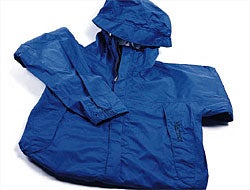Mountain Mobiles

Fueled in large part by marketing image, the sport-utility vehicle has become de rigueur equipment for mountain travelers. But even though, as skiers, we may more easily justify driving a big rig than the average mall-circling suburbanite, the full-on SUV is often overkill.
Enter the latest compact utes, which are based on a car or unibody frame instead of a truck chassis. They combine the traction of 4WD and the higher clearance of traditional SUVs with smoother handling and better maneuverability. It’s not an entirely new concept (remember the butt-ugly AMC Eagle of the ’80s?), but today’s models are practical without forsaking zest. The Subaru Forester, Toyota RAV4, and Honda CR-V are leaders of the genre.
The big-ass road hogs that we know as truck-based SUVs are prone to tipping (thanks to high centers of gravity), clumsy emergency handling, long braking distances, and farm-implement fuel-efficiency levels. Rarely do these vehicles ever encounter the rugged conditions and workloads their underpinnings were designed for. What’s more, they can inspire the overconfidence that makes the flipped-over SUV a common sight on winter roadways.
The new compact SUVs have more traction-savvy all-conditions drive trains (e.g., full-time versus part-time 4WD), making them better suited to highway speeds on snow and ice — as well as on dry pavement — and to navigating crowded parking lots. In other words, the sort of conditions most of us encounter on the typical winter foray into the high country. They’re also much more fun to drive on twisty mountain roads, and short-legged passengers won’t need a booster step to get inside. The tradeoffs are less cargo capacity and diminished off-road performance.
Five standouts in the SUV class of 2002 deftly balance sport and utility with safety and comfort; any of them would be a faithful companion for mountain adventuring.
1. HYUNDAI SANTA FE: ($17,000-$23,000): Korea-based Hyundai’s shapely, head-turning SUV counters the company’s reputation for vanilla-bland cars. Based on the Sonata car platform, this user-friendly rig offers a European-designed 4WD system, a smooth V6 engine, ample storage room, and a staggeringly exhaustive warranty.
2. FORD ESCAPE: ($18,390-$21,565): Ford’s latest entry to its E series (think Expedition, Explorer, etc.), the unibody-framed Escape dishes up spirited highway performance while mirroring the muscular attitude of its bigger siblings. In contrast to similar vehicles in its class (Toyota RAV4, Honda CR-V), the Escape offers a choice of engines, including a load-taming six cylinder.
3. TOYOTA HIGHLANDER: ($23,515-$26,495): The smart-looking Highlander nestles performance-wise between the ever-popular 4Runner and the redesigned RAV4. Slightly wider and longer than the 4Runner, this Camry variant is roomy and agile yet eager for adventure. Choose the silky V6 engine for sizzling mountain-pass performance.
4. LAND ROVER FREELANDER: ($26,000 and up) This is a serious vehicle for tackling torturous terrain, with a compact, reinforced unibody frame and sophisticated traction control. Classically handsome, the Freelander gives Rover élan at a more down-to-earth price
5. JEEP LIBERTY: ($17,035-$23,305). With its retro design and off-road prowess, the jaunty Liberty is equally at home tooling around Tahoe or Timbuktu. Following in the tire tracks of the top-of-the-line Grand Cherokee, the Liberty has a superrugged uniframe body and all of Jeep’s award-winning bells and whistles.